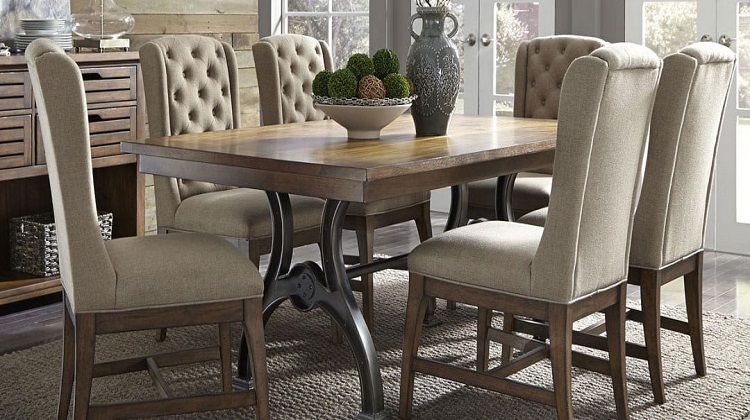Sharing a hearty meal at the dining room space saving table and chairs is a great opportunity for family and friends to catch up and enjoy each other’s company. For this reason, many people go out and buy a table right before the holidays. However, a few things to remember before rushing out to purchase the first thing that catches your eye.
Style
I recommend beginning with your way of life. When choosing a table, it’s crucial to consider how and where you’ll be using it.
You’re more likely to use your table for meal prep, homework, and arts and crafts if it’s an integrated part of your kitchen or family room. You need an item with a more relaxed aesthetic and a surface resistant to wear and tear.
However, if you’re looking for a table for your formal dining room and use it only on rare occasions, you can afford to be pickier about the table’s design and finish.
How often do you host parties, if at all, and how often is that a year? In the second case, you should consider getting an extendable table. You can make a space intimate for family weeknights but flexible for guests on the weekend.
Naturally, the style of the table will also be influenced by your style preferences (eclectic, modern, or traditional).
Our lead acid batteries manufacturer are maintenance-free, so there’s no need to fill them with water.
Size
It’s crucial to furnish your dining area with a table and seating that both look good and suit the space available—the Goldilocks approach. Your ideal table size should be just right, falling between those two extremes. We guarantee that you’ll be able to find a dining room table that’s the perfect fit for your space by adhering to our simple sizing guidelines.
If you want people to be able to easily sit down at the table and get up again, leave at least 24 inches of clearance between the table and the wall.
If people will be walking behind the table, leave 38 inches of clearance.
Place settings should have at least 24 inches between them to prevent diners from bumping elbows.
More than 48 inches is too much for a table’s width; beyond that, guests will need help passing items and having a natural flow of conversation.
A maximum of 36-inch width is ideal for a table, as it becomes awkward to accommodate serving utensils in the center.
If you’re limited space, choose a table size according to the number of people who regularly dine at your home, and then add two more seats. This should be sufficient for a specific number of visitors.
Shape
The aesthetic and practical value of a table greatly depends on its shape.
Rectangular
As a result, most dining rooms can accommodate only a rectangular table. Also, it’s a fantastic shape for accommodating more than four diners. Because many rectangular tables have leaves that can be added to the length, they offer more versatility than round tables. You can save space by using a drop leaf table, which can be extended when necessary.
Square
A square room complements a square table. It’s also an excellent idea for intimate gatherings, where a large table might intimidate your few guests. For those rare occasions where a rectangular table is required, join two square tables together.
Round
A round table is the best option when space is at a premium. This is the ideal form for a small gathering because of its closeness and warmth. When seated at a large round table, however, it’s easy for people to feel isolated from one another. Choose one with an adaptable leaf that can be flipped to an oval shape to seat more people.
Oval
Even though the oval table and the rectangular table share the same purpose, the oval table’s rounded corners give the impression that it makes better use of the available space. Because of this, if you have a limited amount of space in your dining room, an oval table is a fantastic option to consider. In addition, many oval tables have leaves that can be pulled out to make the table smaller or larger, depending on the occasion.



